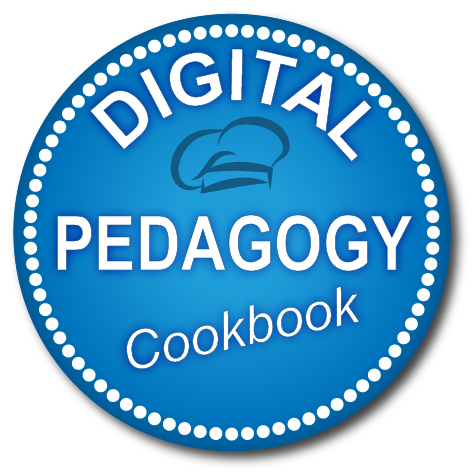DigCompEdu Competence area
Progression Level
Minimum digital skills level of Students
Minimum digital skills level of Educators
Learning/Teaching situation
Software applications come to serve an effective way of both teaching & learning.
Target group
Students attending the courses who need to be able independently to work with vide player software to have access to the screencast
Teachers/Trainers who are able to produce their own contents and have the digital skills to work with video-recording and editing software
Ingredients
- PC/laptop
- Internet connection
- Video Recording Software
- Camera
- Microphone
Description
Video cast (a.k.a screencasting) is a video recording of any instructional activity performed on a computer screen (basically anything occurring on a person´s screen) accompanied by audio narration as explanation. It is one of the tools used for creating instructional videos to share knowledge and ideas, and it is often used as a learning resource and support tool. You can create your contents depending on your goals: tutorials, demonstrations, digital storytelling, narrated PowerPoint presentations etc.
It is an easy and efficient way to produce content that has to reach a number of people or needs to be delivered repeatedly, e.g. introductory training for new employees or students, or teacher´s input for lectures, explanation how to use an app, etc.
A screencast can provide learner-centered and engaging experience facilitating the learning process. It can be used both for distance-learning or in traditional learning settings for visualizing the contents. Screencasts offer input in an engaging form, allowing for visualizing the contents, thus enhancing the learning process. Depending on the purpose of the input, sometimes it may easier to convey and perceive in a visual form, rather than written words.
How to do it (step by step)
Step 1
Contents
Define your topic and objectives in order to choose what form exactly your videocast will have (tutorial, lecture-like presentation, demonstration, etc). The advantage of using screencasts is that you can easily explain a step-by-step process, present a PowerPoint in a more appealing way, or explain a concept with visuals. Furthermore, rather than using someone else´s contents you can easily tailor your screencast to serve your preferences and objectives, allowing for full control over what is being delivered to your students. Your students also can control when, how and with what frequency to watch the video, thus allowing for flexible learning tailored to the specific pace and needs of the student.
Trainers/teachers are to bear in mind that videocasts (if aimed for distance-learning) are not as interactive as webinars, or face-to-face sessions, and they provide only one-sided input from the trainer/teacher. Hence, depending on the objectives, the message and input you want to convey, as well as the reaction you would like to evoke in the other participants, you need to structure your contents in clear, self-explanatory, and comprehensible steps, so that the contents can be grasped without further assistance.
If the videocasts are played in a classroom environment, then it is easier for the teacher/trainer to explain. In these cases you may even have only the video without audio-narration.
To your input more engaging you can incorporate videos, music, sound effects, graphs, etc. Using multimedia allows for creating more engaging and effective learning experience involving visualization and listening as supporting learning mechanisms.
Step 2
Video-maker
There is an array of different software that can be used for video casting.
Wink Screen Recording and CamStudio are one of the apps available for free, which can help you create your own video. One of the most popular apps for screencasting is Camtasia, but it is a paid software.
A list with more tools for screencasting you can find below:
- Screencapture and Screencasting Tools, available at: http://c4lpt.co.uk/directory-of-learning-performance-tools/screen-capture-tools/
Step 3
Usage
Setting
You can use the screencasts in diverse ways depending on your goals.
You can make them available for students to watch them outside the classroom, either as a preparation for the next class or as additional materials complementing your last session, or just for information to be available at any time in case some students missed the class. If your aim is to engage students as much as possible, you can have them watch the screencast at home prior to the session, and then moderate a discussion during the face-to-face session covering the material of the screencast. This will allow you to use the face-to-face approach to encourage interaction and students´ input rather than having one-sided lecture only delivered by the teacher. Students attend the class with already some prior knowledge on the topic and will be able to engage critically with it rather than simply listening to what is delivered.
In the classroom, screencasts will be useful for visualizing specific contexts – videos for science experiments, or graphs, or step-by-step sequences. It may be also useful to use when the teacher is not available, and they have to be substituted by another colleague – screencasts can support the work of the substitute teacher.
Input
The contents provided can be quite diverse serving multiple purposes. For example, they can be delivering specific information, or teaching how to use different online tools or application for academic purposes. Moreover, you can provide feedback to your students for their papers, exams, etc. through a screencast. When giving feedback, in addition to what it is being said the way it is conveyed is also important, thus providing a context for constructive feedback.
Videocasts are used for product promotion, which can be also applied in educational context. It could be a way for teachers/trainers to promote their courses – making a video with the course description may be a good way to attract new applicants.
In addition, it is not necessary for the teacher/trainer to be always the one producing the videocast. As a task students may have to prepare a screencast on a specific topic, thus critically engaging with the information and choosing what and how to involve. It could be an engaging way for learners to interact with specialized data.
Step 4
Edit
Having already recorded the videocast edit it further to add – graphs, pictures, videos, titles, highlights, captions etc. to ensure that it is coherent and enticing.
You can use a special editing software or have it built-in in your video-recording programme.
Step 5
Publish
Depending on your target group and goals you can make the video available only for a specific group on a platform with restricted access or publish it in public channels having a wider outreach.
You can share a link in an email, blog, social media post etc., or you can directly upload the video.
Sources:
- The Ultimate Guide: What is Screencasting and Why Use it?, available at: https://www.techsmith.com/blog/what-is-screencasting/
- Ruffinin, M., Screencasting to Engage Learning, available at: https://er.educause.edu/articles/2012/11/screencasting-to-engage-learning
There is more…
Screencasting is a useful tool allowing for teachers/trainers to deliver input to their learners in an innovative, more appealing and engaging manner. It can be used for creating simple videos of step-by-step demonstration on the computer screen for people who are yet to gain more experience in screencasting, and for the already screencast-savvy ones they can edit and add diverse multimedia sources creating more elaborate contents.
See Also
- 7 Things You should Know about Screencasting, available at: https://library.educause.edu/resources/2006/3/7-things-you-should-know-about-screencasting
- Onlignment, A Practical Guide to Creating Learning Screencasts: part 1: available at: https://archive.onlignment.com/2011/04/a-practical-guide-to-creating-learning-screencasts-part-1/
- Onlignment, A Practical Guide to Creating Learning Screencasts: part 2: available at: https://archive.onlignment.com/2011/04/a-practical-guide-to-creating-learning-screencasts-part-2-creating-all-in-one-take-screencasts/
- Onlignment, A Practical Guide to Creating Learning Screencasts: part 3: available at: https://archive.onlignment.com/2011/05/a-practical-guide-to-creating-learning-screencasts-part-3-using-desktop-tools/
Wink: The Basics, available at: https://www.youtube.com/watch?v=H_3oA1TR79w

